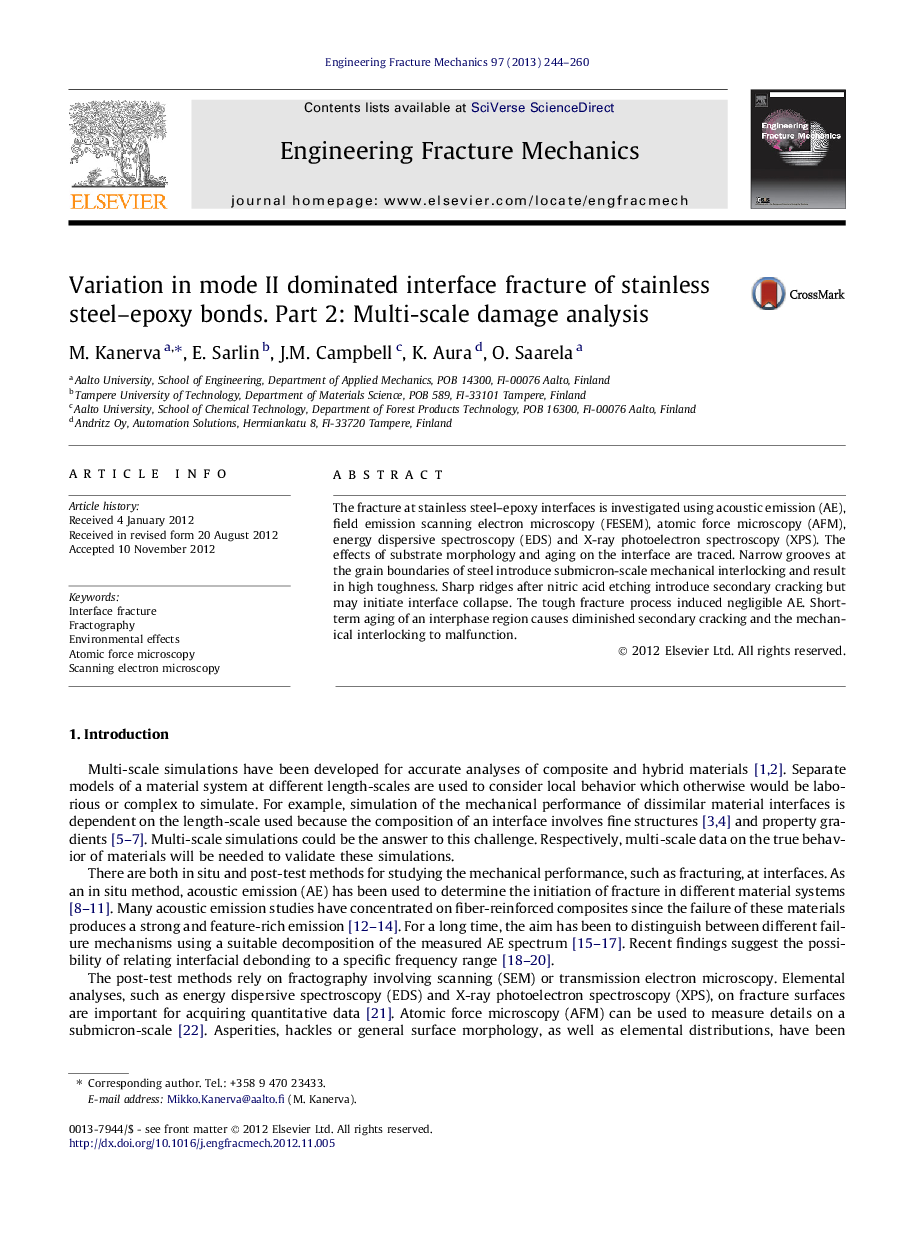| Article ID | Journal | Published Year | Pages | File Type |
|---|---|---|---|---|
| 775117 | Engineering Fracture Mechanics | 2013 | 17 Pages |
The fracture at stainless steel–epoxy interfaces is investigated using acoustic emission (AE), field emission scanning electron microscopy (FESEM), atomic force microscopy (AFM), energy dispersive spectroscopy (EDS) and X-ray photoelectron spectroscopy (XPS). The effects of substrate morphology and aging on the interface are traced. Narrow grooves at the grain boundaries of steel introduce submicron-scale mechanical interlocking and result in high toughness. Sharp ridges after nitric acid etching introduce secondary cracking but may initiate interface collapse. The tough fracture process induced negligible AE. Short-term aging of an interphase region causes diminished secondary cracking and the mechanical interlocking to malfunction.
► We characterize interface fracture from both morphology and elemental point of view. ► Mode II dominated interface fracture is initiated by mode I failure on a microscale. ► Grooves and ridges result in a toughening effect via interfacial damage of epoxy. ► Short-term aging of AISI 304-epoxy interface leads to interphasial embrittlement.
